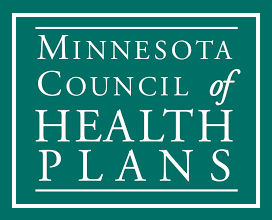The Minnesota Legislature just wrapped up one of its busiest – and, yes, largely virtual – special sessions that included a two-year budget deal and legislation that will positively impact the health of Minnesotans amid the pandemic and beyond. The regular legislative session began fully online January 5 and regular session was adjourned without reaching agreement on the biennial budget on May 17. Lawmakers were then called into special session on June 14 and enacted a $52 billion state budget on June 30 to avert a government shutdown. Throughout both sessions, the Council and health plan lobbyists worked extensively with legislators and stakeholders on several issues that were ultimately included in the omnibus health and human services (HHS) bill. This includes an extension of the state’s reinsurance program though 2022, changes to telehealth visits post pandemic, and continued care coordination management of non-emergency medical transportation (NEMT), pharmacy, and dental services for Minnesotans using Medicaid and MinnesotaCare.
Re-up of Reinsurance
Minnesotans who buy health insurance on their own through MNsure or an insurance broker will continue to have access to lower premiums thanks to an extension of this vital program. Reinsurance was a top priority in the final negotiations of the special session, with lawmakers agreeing to a fifth year of the program that would carry it through at least 2022.
The state’s reinsurance program – funded by both federal and state governments – has been widely lauded for stabilizing the individual market and lowering premiums 20% on average. Reinsurance makes health insurance more affordable, accessible and stable for the 160,000 individuals who buy insurance on the individual market by covering 80% of medical claims between $50,000 and $250,000 – after which a health plan is responsible for all remaining costs. Under the changes adopted for 2022, the program would continue to be funded by state and federal money, but at a modestly reduced level. The changes will lower the 80% coinsurance rate to 60% for 2022.
Overall, reinsurance paid for more than $160 million worth of claims in 2020 and effectively took those costs out of the insurance pool to the make the costs of coverage much more affordable for Minnesotans. Otherwise, these costs would have been included in everyone’s monthly premiums. The agreement reached during session also includes directing the Minnesota Department of Commerce to apply for a continuation of the 1332 waiver that would extend reinsurance for a sixth year. An appropriation from the Minnesota Legislature will still be required during the 2022 session to operate the program beyond next year.
Expenditures from the program have been debated at length and are often misunderstood. The most recent report from the Minnesota Comprehensive Health Association, which oversees the reinsurance program, shows that costs associated with diabetes, cancer, and asthma account for the highest number of claims covered by the program. Funding sources for reinsurance have also been significantly debated. Over the first four years, Minnesota has relied on the Health Care Access Fund — largely funded by a 1.8% tax of health care providers and a 1% tax on insurance premiums – and nearly $380 million of federal funding to support the program.
Some have argued that the program is no longer necessary because of the new American Rescue Plan Act (ARPA) subsidies available to many in the individual market. While the Council and member health plans support the subsidies because many will see lower premiums, there are still thousands of Minnesotans who would not qualify for this relief and would see higher premiums – some as much as 25% – as a result. Additionally, if the subsides expire as scheduled in 2023, Minnesota would return to much higher premiums and market instability. That is why the Council continues to advocate for reinsurance to work in tandem with the enhanced subsidies. Click here to read our letter to legislators regarding the state’s reinsurance program and why it is an important lever in ensuring affordability for Minnesotans.
Evolution of Telehealth
As the COVID-19 pandemic unfolded, telehealth was quickly revolutionized, with utilization growing exponentially during the public health emergency. The Council worked closely with Sen. Julie Rosen (R-Fairmont) and Rep. Kelly Morrison (DFL-Deephaven) on their legislation that sought to continue certain elements of the expanded coverage and reimbursement for telehealth services used during the pandemic.
The Council worked extensively with the authors and stakeholders to support positive reform that would capture the benefits of telehealth while passing any savings back to consumers.
A deal was reached that updated the Telemedicine Act to sunset higher pandemic payment levels for audio-only services and authorize value-based payment arrangements that can deviate from the higher payment levels equivalent of an in-office visit, also known as payment parity. These important reforms will benefit Minnesotans with access to high-quality care that can be delivered at a lower cost.
Additionally, a preliminary report with findings and recommendations regarding audio-only services will be due to the Legislature by January 15, 2023. A full report about the impacts of telehealth care delivery on patient outcomes and the financial impact of payment parity is expected to be submitted a year later.
Continued Coordinated Care
Managed Care Organizations (MCOs) provide the value of care coordination in Minnesota’s managed care program. However, efforts were made to carve out pharmacy, dental and NEMT benefits from MCO contracts and give the Minnesota Department of Human Services authority to administer them independently. The Council played a pivotal role this session in preserving this coordination of non-emergency medical transportation (NEMT), pharmacy and dental services for Minnesotans enrolled in state programs.
Carving out these benefits would have negatively affected the quality of care for Medicaid and MNCare enrollees. When care is managed by an MCO who has a line of sight to all aspects of a person’s health, care is delivered in a highly coordinated way. MCOs offer large provider networks, care coordinators and culturally specific resources that address members’ medical, dental, transportation, pharmacy and social support needs.
During special session, the Council argued appropriate state funding was needed to improve the program and worked closely with the legislature to achieve a positive compromise. The final HHS omnibus bill included a 98% increase for dental providers starting next year and appropriates funds toward a dental homes pilot aimed at increasing access to dental care in underserved communities. With dental rates increasing, it is expected that more providers will accept patients enrolled in Medicaid. Patients enrolled with an MCO will also continue to receive NEMT, pharmacy and dental benefits through their health plan of choice. Read our one-pager to learn more about how health plans provide coordinated care.
Other Developments
The Council also supported the adoption of other measures during session that positively impacted Minnesotans by improving access to care and controlling costs. They include:
- Fixing the family glitch: Starting January 1, 2023, Minnesotans seeking family coverage will be eligible for state support based on the true cost of family coverage. The “family glitch” bases eligibility for federal tax subsidies on the affordability of employee-only coverage instead of the entire coverage sought, leaving many without access to affordable coverage.
- Funding for tobacco and vaping prevention: With the state’s backing, tobacco cessation and prevention programs in Minnesota will continue supporting thousands of Minnesotans across the state in their journey to achieve a tobacco-free lifestyle.
- Extending Medical Assistance (MA) coverage for postpartum care from 60 days to 12 months: Lengthening postpartum coverage in the MA program from 60 days to a full year will continue vital health care access for new mothers. Statistics also demonstrate that extending this coverage will make much needed progress in advancing health equity.
- Benefit mandate review: The Council supported requiring preemptive evaluation of benefit mandate proposals to provide the legislature with all the necessary information – via an actuarial analysis – to make more informed decisions regarding the economic and safety impacts any coverage mandates would have on those enrolled in the fully insured market.

